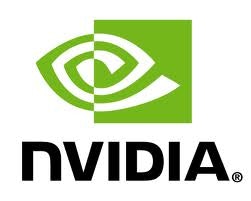It’s been a while since Wall Street has shown any love toward NVIDIA Corporation (NASDAQ:NVDA) .
Shares of NVIDIA have underperformed the Nasdaq Composite Index by a staggering 88% over the last five years. It’s going to take more than just a good quarter to change investor beliefs that NVIDIA is a company that can thrive in the post-PC world. To that end, NVIDIA is determined to gain tremendous market share by successfully capitalizing on the mobile computing revolution. The company is taking its metamorphosis so seriously that it changed how its segments are reported. Going forward, NVIDIA’s business will be broken down into just two segments: GPU and Tegra. According to NVIDIA, its Tegra mobile line of processors will act as a jet fuel for NVIDIA’s growth engine, which it believes can continue growing by over 50% a year for the foreseeable future.

Business pulse
| Segment | Fiscal Q4 2013 Revenue | Percent Change (QOQ) | Percent Change (YOY) |
|---|---|---|---|
| GPU | $832.5 | (6.9%) | 7.1% |
| Tegra processor | $208.4 | (14.6%) | 89.8% |
| All others | $66 | 0% | 0% |
Source: NVIDA CFO commentary for fiscal fourth quarter 2013. All dollar figures in millions. GPU =
graphics processing unit. QOQ = quarter over quarter.
NVIDIA’s GPU segment saw a sequential decline as demand reverted back to the mean after a strong debut of its Kepler GPUs the quarter before. Overall, the year-over-year increase in the GPU business was mainly associated with strong performance in notebook GPUs as a result of Intel Corporation (NASDAQ:INTC) Ivy Bridge design wins, which is surprising, when you consider the 6.4% decline in PC shipments in the fourth quarter 2012. On the Tegra side of things, the sequential decrease stemmed from lower sales volume of its Tegra 3, following record holiday orders the quarter prior. Still, Tegra 3 volume was great enough to report a high increase in year-over-year growth.
During the quarter, the company had three Tegra-powered Microsoft Corporation (NASDAQ:MSFT) Windows RT devices hit the market, including the Microsoft Surface RT. The company also announced Project Shield, a Google Inc (NASDAQ:GOOG) Android/Tegra-powered gaming device expected to ship in the second quarter of 2013. NVIDIA’s next-generation flagship mobile processor, Tegra 4 made its debut, but won’t be shipping to customers until toward the later half of the second quarter this year. Also noteworthy, NVIDIA continued to make progress on GRID, its cloud-based gaming system by signing deals with six middleware providers. Additionally, its Tesla K20 line of GPUs, which helps power Titan, the world’s fastest supercomputer, has been made available to the public.
Financially speaking, NVIDIA comes from a position of strength with $3.73 billion in cash reported on its balance sheet. At current levels, this cash represents nearly 47% of the company’s market cap, which to me says that NVIDIA is not getting any credit for its cash balance. Strip out this cash and NVIDIA is trades around eight times earnings, or 20% cheaper than the extreme value Intel offers.
So what’s the problem?
If Tegra is the future of NVIDIA, it sure has a lot of growing to do before shareholders take it seriously. The emphasis with NVIDIA continues to be put into the future, and the expectations set by the CEO keep promising that the company will deliver innovative products that the world loves. In the context of Tegra, it boils down to successfully integrating a 4G-LTE modem directly onto the processor. CEO Jen-Hsun Huang reiterated this importance on NVIDIA’s most recent conference call, saying how an integrated approach is absolutely necessary for Tegra to make a splash in smartphones.
Jen-Hsun Huang has shown a long history of setting the bar high. Perhaps this approach hasn’t helped investors, who continue to raise their own expectations beyond a rational level, which ultimately leads to a letdown. It stands to reason that until NVIDIA delivers more than its lofty promises, the company is likely to continue its track record of underperformance.
The article Will NVIDIA Continue to Underperform? originally appeared on Fool.com and is written by Steve Heller.
Fool contributor Steve Heller owns shares of Google and Intel. The Motley Fool recommends Google, Intel, and NVIDIA. The Motley Fool owns shares of Google, Intel, and Microsoft.
Copyright © 1995 – 2013 The Motley Fool, LLC. All rights reserved. The Motley Fool has a disclosure policy.





